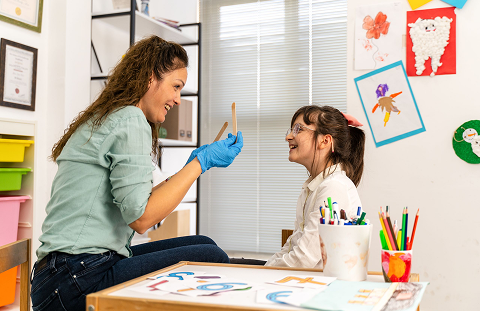
Speech and Language Development
For a child to communicate, learn, and develop socially, speech and language are essential. Neurological disorders, hearing problems, or developmental delays can all cause difficulties. Early detection and intervention, particularly from birth to age six, can greatly improve a child's capacity for social interaction, clear thought expression, effective communication, and confidence-building in day-to-day interactions.
Children benefit from structured therapy sessions by improving their articulation, vocabulary, fluency, and comprehension, which helps them successfully meet age- appropriate language and communication milestones.

Speech Therapy Approach
Using methods supported by research, speech therapy seeks to enhance communication abilities. A customised approach is given to each child, emphasising social interaction, speaking, and listening. Therapists work together with families, providing direction and at-home techniques to guarantee regular practice and continuous improvement.
In order to help children and adults thrive academically, socially, and professionally alongside their peers, speech therapy aims to help them develop clear speech, effective communication, and increased confidence.

